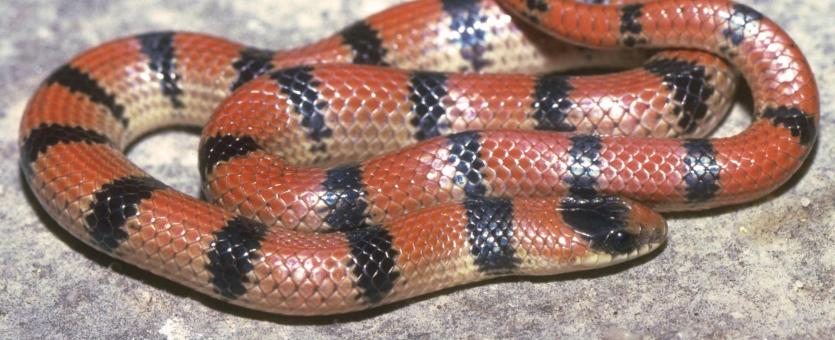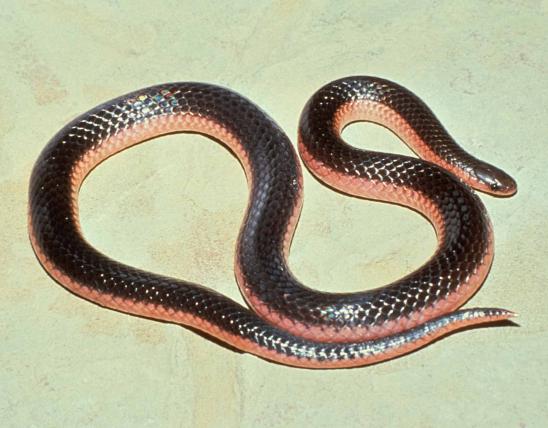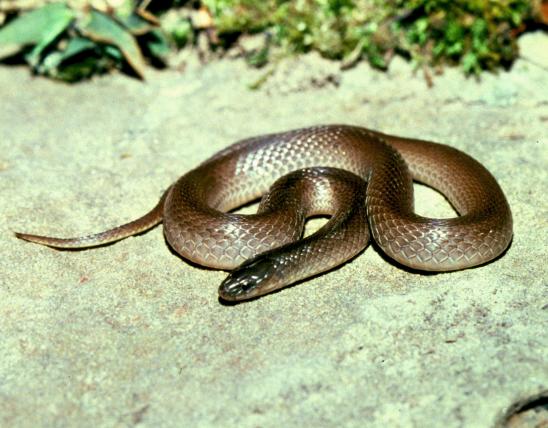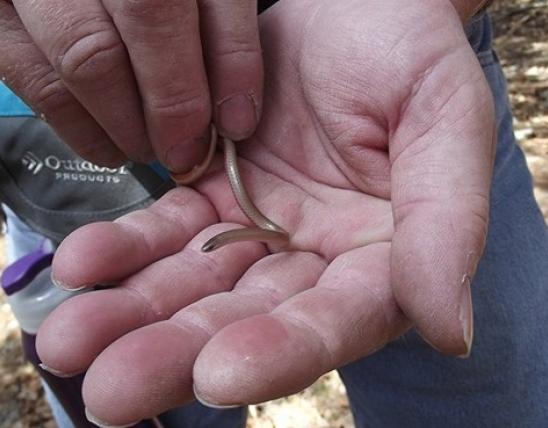
The variable groundsnake is a small, gentle, secretive species with smooth, shiny scales and highly variable coloration and patterning. The ground color can be gray, light brown, orange, or reddish brown.
- Some individuals may have dark brown or black bands along the entire length;
- Others may have only a few bands or blotches along the forward part of the body;
- Others may be totally patternless (plain).
In our state, this species often has an orange or red tinge between the crossbands. The belly is white or cream colored, with numerous dark gray bars or marks on the underside of the tail.
When threatened, a variable groundsnake tries to flee to a hiding place, tucks its head under its body, or even plays dead by opening its mouth, sticking out its tongue, and rolling onto its back.
Adult length: 8 to 12 inches; occasionally to 19 inches.

Southwestern corner of the state, in counties along the southern border as far east as Howell County. There is an isolated population in St. Clair County.
Habitat and Conservation
Variable groundsnakes are usually found on rocky, wooded hillsides that face south or southwest or on open, rocky glades.
They are seldom seen in the open, as they remain hidden under flat rocks during the day. They may become active on the ground surface at night. They are most frequently seen after spring rainfalls. In hot weather, they burrow underground to find cooler temperatures and higher humidity. Special valves in their nostrils can close to prevent sand and soil particles from entering when they are burrowing.
They are usually active from April through early November.
This species apparently overwinters under large rocks in rocky crevices below the frost line; this may be from 2 to 8 feet underground.
Food
Variable groundsnakes eat scorpions, spiders (including black widows), centipedes, and soft-bodied insects such as crickets.
Status
Uncommon. Missouri’s population of groundsnakes depends on the availability of rocky glades and forested rocky hills. As long as these types of habitat are protected, the species should continue to survive.
Life Cycle
Courtship and mating normally occur during April or May, but autumn mating has also been reported. Females lay eggs in loose, damp soil under rocks during June and July. Each female lays 1–6 eggs, with an average of about 4. Hatching occurs about 2 months after the eggs are laid, around August and September. Groundsnakes become sexually mature at about 1 or 1½ years of age.
Human Connections
Variable groundsnakes are not known to bite people.
Although many people think of an animal’s value only in terms of its economic imprint on human affairs, the science of ecology has shown us that each component of the natural community plays a unique and important role. Valuing nature means valuing even the smallest and humblest plants and animals.
Ecosystem Connections
As predators, groundsnakes control populations of the scorpions, spiders, and other animals they consume.
As with many other predatory species, groundsnakes can be preyed upon themselves by larger animals, which helps explain their secretive habits and defensive tactics, including "playing dead." The eggs and young are especially vulnerable, and many individuals don't survive to adulthood.
Variable groundsnakes are often found in association with flat-headed snakes.
































